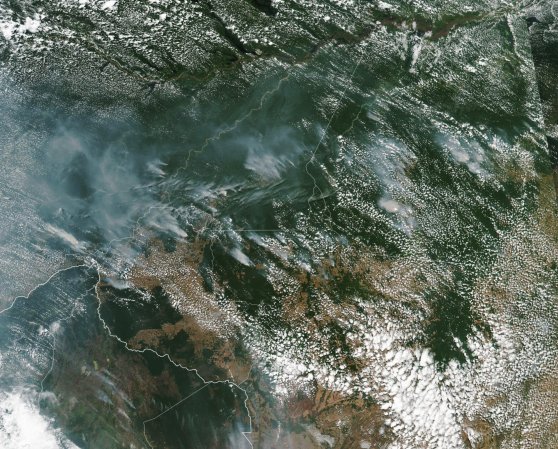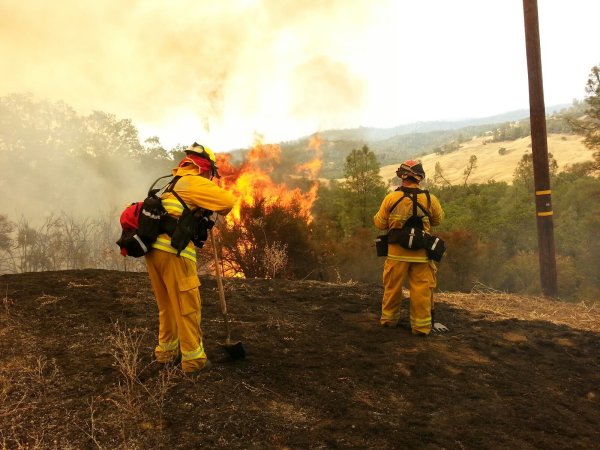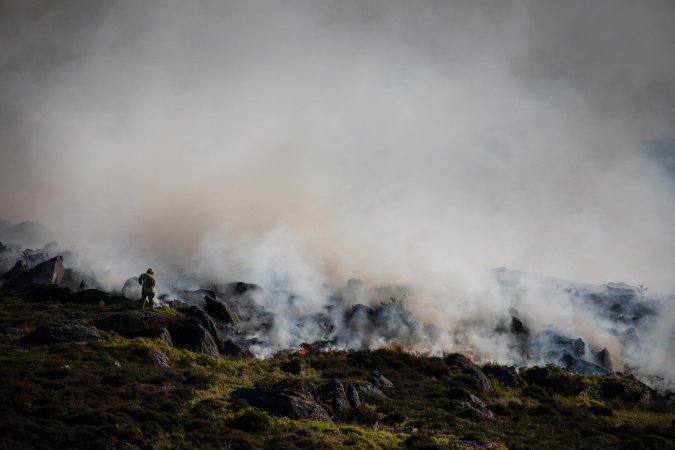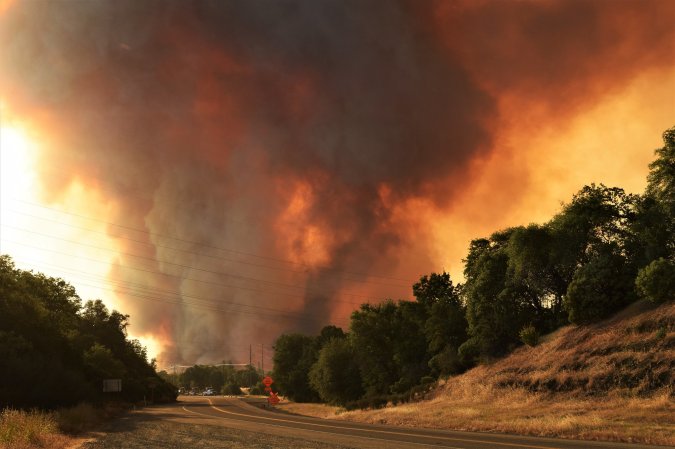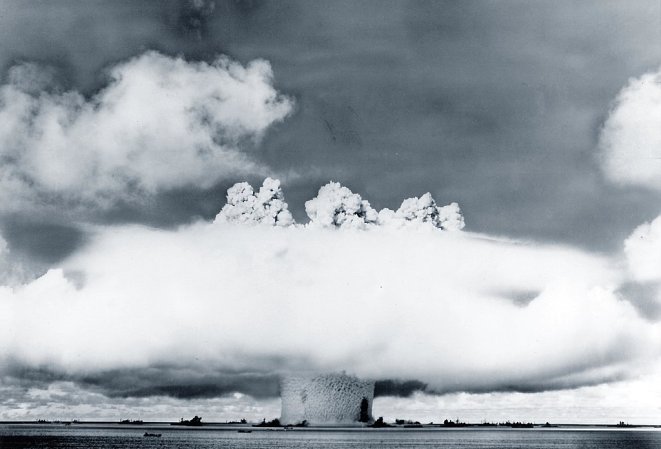

Over the last week, nearly 200 wildfires have burned across central Texas, covering 100,000 acres and sending smoke as far east as Houston. The biggest blazes lie southwest of Dallas, in a mixture of prairie and forested savanna. While the immediate danger has died down after a few days of rain, underlying drought conditions still remain, and it’s possible that the state will see more fires in the coming week.
Spring is a normal time for wildfires on the Texas plains; the grass that died over the winter haven’t been revived yet by early summer rains. But these fires are unusual in their speed and intensity. Between March 17 and 18 of this year, nearly 60,000 acres burned across the state. That’s not quite as large as the late-summer fires in California, the most destructive of which have burned hundreds of thousands of acres—but the Texas fires have moved remarkably quickly across open grassland, much like the blazes that consumed the suburbs around Boulder, Colorado, earlier this winter.
As of Tuesday, the Eastland complex, the largest of the fires, had covered roughly 54,000 acres, destroyed more than 150 structures, and killed one sheriff’s deputy assisting the evacuation. In a recent press release, Luke Kanclerz, a fire analyst with the Texas A&M Forest Service, a state agency which manages wildfire response, said that whole stands of oak and juniper trees had been observed going up in flames. The complex is now 60 percent contained, according to InciWeb, a federal database of active wildfires. Juan Rodriguez, a public information officer for the Texas A&M Forest Service, says that based on wind directions and other local conditions, it wasn’t expected to burn outside of the containment line. (See a real-time map of here.)
Most of western Texas and Oklahoma are currently in a drought, with patches of “extreme” and “exceptional drought” stretching across large parts of the plains. The area of the Eastland complex has received less than 25 percent of its normal annual rainfall so far. But the immediate trigger for the fires came from a few days of “high temperatures, extremely high winds, and low relative humidity,” says Rodriguez.
Texas officials are still investigating the cause of the fires: Humans are responsible for starting the majority of the state’s burns, Rodriguez says, but thunderstorms have also passed through the region. By last Thursday, almost any fire was primed to spread. The weather “created a perfect environment for wildfires to start extremely easily, and carry extremely fast,” Rodriguez explains.
A storm that passed through on Tuesday—causing tornadoes in the eastern part of the state and into Louisiana—soaked some of that dry grass, temporarily reducing the danger that new fires would spring up. Several evacuation orders issued over the weekend have since been lifted. But as of last week, the US Drought Monitor reported that even in areas of the South that had been drenched by five inches of rain, soil moisture was near historical lows. That means that grass will quickly dry out again and potentially start new fires. A forecast released Monday by the Texas A&M Forest Service warned that hot, dry, gusty conditions would last until at least Thursday, with the most dangerous conditions moving farther west, closer to the New Mexico border.
A study done last year by atmospheric scientists at the University of California, Los Angeles, found that as average temperatures increased since 1980, so did the chances of fire weather across the western US. The driver is the “vapor pressure deficit” on vegetation: Hotter air holds more moisture and can act like a vacuum, sucking water out of plants and leaving them crisp and flammable. Although the analysis didn’t include Texas, it found that changing climate conditions dried out the adjoining plains of New Mexico far more than could be explained by annual weather variations.
[Related: Don’t blame national forests for America’s massive wildfires]
As John Nielsen-Gammon, a Texas A&M atmospheric scientist, told the Washington Post, annual rainfall has actually increased in central Texas over the last 20 years (2021 was particularly wet). But more sporadic, intense rain can counterintuitively increase fire danger when paired with intermittent drought. Grass can grow thick and tall in the wet seasons, before dying off in the dryer months, leaving more fuel to burn.
Currently, emergency responders from the Texas Forest Service are also working to clear tornado damage in eastern Texas and snow and ice from the Panhandle, Rodriguez says. In response, the state has called up two local fire departments and wildland firefighters from as far as Florida.

